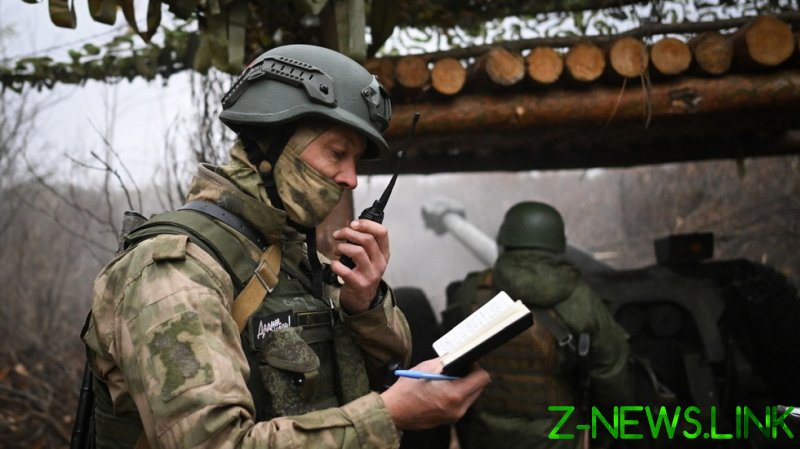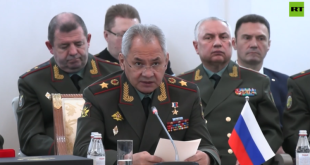
The stated aim of the much-hyped Ukrainian counteroffensive was to inflict a major strategic defeat on Russia by cutting off the land corridor to Crimea. But hardly anyone in the Western military and political establishment with any real knowledge believed that Kiev would be able to achieve such a result. It would have been strange to expect otherwise: throughout the war, the Ukrainians have never managed to break through prepared defenses of Russian troops.
The Kharkov offensive in September 2022 was conducted against an extremely small and stretched Russian force with no serious fortification system. The Kherson Region push in August-November 2022 was also carried out against depleted and overstretched defenders, but resulted in only limited advances with heavy casualties until the threat of the destruction of the Dnieper River crossings forced the Russians to retreat to the left bank.
Given this, it seemed strange to expect the Ukrainians to succeed under the new conditions that prevailed by the summer of this year: the numerical balance of forces had shifted in Moscow’s favor; the Russian defense line was well equipped and fortified; and the mobilization of domestic industry was also beginning to show results.
So the real aim of the offensive was not to defeat Russian forces and gain access to the Sea of Azov, but rather to force Moscow to negotiate on terms favorable to the West. This required, firstly, demonstrating that Kiev retained the strategic initiative; secondly, inflicting heavy losses on the Russian army, which would destabilize the situation inside the country; and thirdly, making some headway so as to be able to claim a form of victory.
Crisis of Ukrainian strategy
The Ukrainian offensive had primarily political objectives, and the main criterion for its success was to change sentiment in Russian society and the perception of the situation by the country’s leadership. Such planning was characteristic of Kiev throughout the conflict. Much of Ukraine’s effort, and perhaps most of its losses, have come in operations designed to create a strong media impact.
The stubborn defense of cities declared “fortresses” under unfavorable conditions, risky forays by specially trained subversive units into “old” Russian territory with videos posted on TikTok, and attacks on symbolic buildings in Russian cities (the Kremlin, the skyscrapers in Moscow-City, etc.) are typical examples of such actions. It is quite likely that this strategy is based on Western ideas about public attitudes to war that were formed during American and European overseas campaigns such as the illegal Iraq invasion.
To use a cinematic metaphor, Ukraine tried to play the role of a kung fu master in an old Hong Kong action movie who, by pointing his finger at specific pain points, expects to knock out an opponent of greater strength and size. But the master has a poor knowledge of anatomy, so he always misses, hitting the places where there are very few nerve endings.
The attitude of Russian society towards the conflict is such that only after several crushing fiascos on the battlefield (encirclement and defeat of large groups of troops) would it agree to admit defeat and withdraw. Minor failures only encourage Russia to devote more and more of its resources to victory. And those are many times superior to what Ukraine can muster (even with all the help the West can provide).
Western visions of the end of the conflict
The failure of the counteroffensive thus showed that the strategy of ending the conflict on terms acceptable to the West has reached a dead end. What were these terms?
A return to the 1991 borders, or even to those of February 23, 2022, was never seriously considered. Nor was Ukraine’s territorial integrity a priority for the US and its allies. Just as the desire to annex new territories was not the main original motive for Moscow to launch its operation.
At the root of the conflict was a disagreement over Ukraine’s place in the regional security system. Russia sought to eliminate the potential threat from the country by forcing it to accept neutral status and agree to restrictions on its defense industry and armed forces.
However, it is important for the US to maintain Ukraine as a potential military bridgehead. Therefore, an outcome in which Kiev loses a substantial part of its territory but remains an American outpost, with subsequent rearmament, US military bases, etc., is acceptable to Washington. In other words, for the Americans it does not matter how much land Ukraine loses as long as it remains economically viable, and controls its main political centers.
By ending the conflict on such terms in the near future, the US could temporarily reduce spending on military support for Kiev and “freeze” the conflict. This would allow the Americans to turn their attention to crises elsewhere in the world and, above all, to focus on containing China.
In the future, with Ukraine incorporated into the system of Western institutions and under the rule of a Russophobic nationalist regime, Washington could at any time return to using the country as a military tool to deter or strategically defeat Russia.
What does Russia want?
For Moscow, such an outcome means a high probability of a new, much more destructive war, perhaps in the not too distant future. Of course, this is not preordained. Even if we assume that the conflict ends on terms acceptable to Washington, many things could go wrong.
For example, the US could get bogged down in conflicts in the Middle East with Iran and its allies, and in the Far East with China and North Korea. If things go badly for the Americans in these regions of the world, they will never be able to return to the project of rebuilding and remilitarizing Ukraine.
The problem, however, is that these are only probabilities that depend on many factors over which Moscow has little or no control.
Russian planning must assume the worst-case scenario – the rapid remilitarization of Ukraine. Consequently, from Moscow’s perspective, the military operation cannot end until this threat is eliminated.
In March 2022, Russia almost agreed to a peace under the terms of which it would not have acquired any new territory but would have received guarantees of Ukraine’s demilitarization and neutrality. And this agreement, as we now know for a fact, was thwarted by the direct intervention of the US and UK.
Since then, the situation has changed. Moscow is faced with the task of reaching the external borders of its four new constituent entities. The Russian constitution makes territorial compromises impossible. The high threat of provocation, sabotage, and terrorist activity on the part of the rump Ukraine may make it necessary to reach other borders as well. In any case, the territorial issue will be settled on the battlefield. The actual border will probably be along the line of contact at the time of the ceasefire.
The balance of power
Meanwhile, Kiev’s strategic position is deteriorating. Signs of exhaustion are becoming increasingly apparent. A decree by the Ukrainian Ministry of Defense published in early September allowing people suffering from viral hepatitis, asymptomatic HIV, mild mental disorders, diseases of the blood and circulatory system and a number of other ailments to be declared fit for military service is illustrative. Other measures have been taken to increase the number of persons subject to mobilization (second and third degree students, students on study leave, female doctors, disabled dependents, etc). Previously issued disability certificates are being revised, military commissions are being inspected and extreme mobilization practices – raids, forcible delivery to military commissions and beatings of deserters – are widespread.
Clearly, irrecoverable losses are significant compared to the mobilization resources available to Kiev. At the same time, the current rate of increase in casualties is such that Ukraine will not be able to withstand it for long. Perhaps the limit of its strength is not years, but months.
Of course, the range of people who could be mobilized could be widened still further. After all, during the Great Paraguayan War of 1864-1870, Paraguay managed to conscript up to 90 % of its male population. When those were lost, toward the end of the conflict it sent women and children into battle.
But the Ukrainian state’s ability to control society is more limited. There is massive corruption and evasion of military service. In addition, the constant replenishment of the list of categories of citizens subject to mobilization leads to a decline in the quality of conscripts and a further increase in casualties. Sending fewer and fewer healthy and trained recruits to the army can buy a small reprieve from defeat at the cost of great sacrifices.
Western politicians and pundits now repeat like a mantra: both Ukraine and Russia are incapable of conducting large-scale offensive operations. The first part of this thesis has been confirmed by the failure of the Ukrainian counteroffensive. However, there is no basis for concluding that Russia is incapable of making a breakthrough on the battlefield. In terms of numbers and weaponry, the Russian army continues to gain strength relative to the enemy.
Since the spring, Russian troops have begun to acquire large quantities of weapons that were previously either completely absent (e.g. universal planning and correction modules for bombs) or used in small quantities (barrage ammunition, FPV drones). In some previously problematic areas (the use of drones for reconnaissance), Russia has caught up with, if not surpassed, Ukraine.
An important achievement has been Russia’s transition, judging from recently published materials, to the use of new types of barrage munitions capable of attacking a target autonomously, using artificial intelligence and pattern recognition technologies.
Finally, the conflict in the Middle East that erupted last month and the growing threat of a major military and political crisis around Taiwan have already led to a reallocation of US military resources and a reduction in aid to Ukraine.
The ability to launch a major offensive depends largely on the Russian military developing new tactics to overcome the current positional crisis. If such techniques are found, the dynamics of the conflict could change dramatically.
A dangerous phase
The deterioration of the situation in Ukraine has intensified the discussion in the West about ways to resolve the conflict. This could be done through negotiations. But they are hampered by the permanent domestic crisis in the US, the internal struggle in the current American administration and the fear of weakening Western unity.
The issue of Ukraine’s future place in the European security system, which is key to ending the conflict, is becoming partially resolved as the conflict progresses. The country’s infrastructure is being destroyed. The bombing of energy facilities in the autumn-winter of 2022-2023 did not lead to a collapse of the energy system only because the drop in electricity consumption, especially by industry, was so severe that it exceeded the damage to generation capacity and networks caused by Russian missiles.
The demographic potential continues to shrink. Ukrainian emigrants in Western Europe are settling in (finding jobs, their children are attending local schools) and the likelihood that they will return is diminishing. The end of the conflict and the opening of the borders may not lead to a return of refugees, but instead to an exodus of the male population still trapped in Ukraine.
The ongoing hostilities are also affecting the business climate. Ukraine remains an incredibly corrupt country. At the same time, under the cover of the conflict and the extraordinary powers of the army and the counter-intelligence services, a massive and violent redistribution of property is taking place. These are clearly not the conditions for a post-war economic recovery.
As a result, the reconstruction of Ukraine may be more difficult and time-consuming than previously thought. But these factors are difficult to predict, so Russia will seek guarantees that there will be no full-scale remilitarization of the country.
Talking about this issue will be painful for Washington and its partners. They probably do not want to see Ukraine in NATO, but making such a commitment to Moscow is unacceptable to them. In addition, the level of trust between Russia and the US is negative. The parties may suspect each other of a lack of willingness to negotiate and an intention to simply leak information about the dialogue in order to achieve a quick political effect.
As a result, the conflict is entering a dangerous phase. The opponent realizes that its situation is deteriorating and may try to break the deadlock with a sharp escalation.
We are already seeing more and more attempts to attack Russian territory within the February 2022 borders. The transfer of new missile weapons to Ukraine should also be seen in this context.
The subversive and terrorist activities are taking on a dangerous character. The recent unsuccessful attempt by the Ukrainian security service to organize a mass poisoning of graduates and teachers of the Armavir Aviation School is a sign that the Ukrainian security services are moving towards organizing mass terrorist attacks, as was typical during the period of the wars in the North Caucasus.
A sharp change in the balance of forces on the battlefield in Russia’s favor could also bring back the possibility of some NATO countries sending troops to Ukrainian territory, which could take Russia and the US to the brink of a nuclear crisis. The stakes are too high for both Moscow and Washington, so this would turn out to be unprecedentedly dangerous.
Such a crisis can be avoided only if the main parties to the conflict begin a dialogue that takes into account the objectively prevailing conditions.
This article was first published by Profile.ru, translated and edited by the RT team
© 2023, paradox. All rights reserved.





